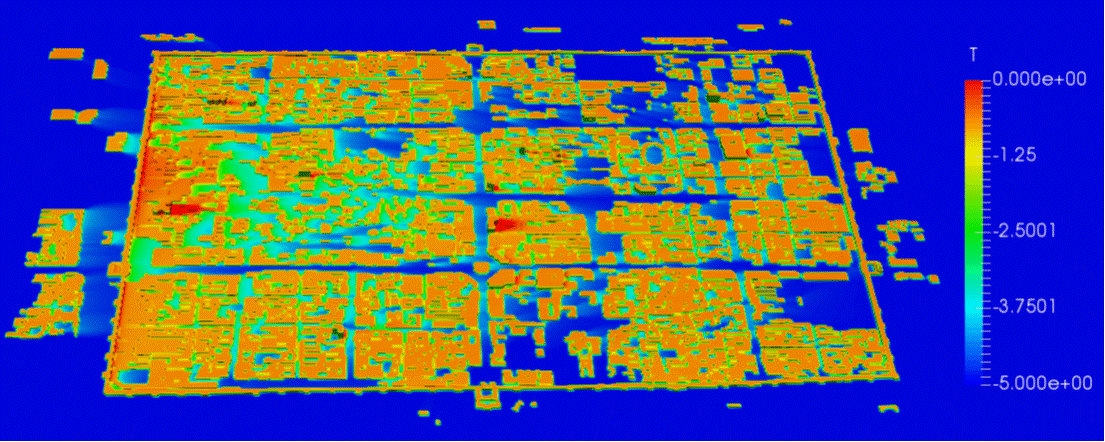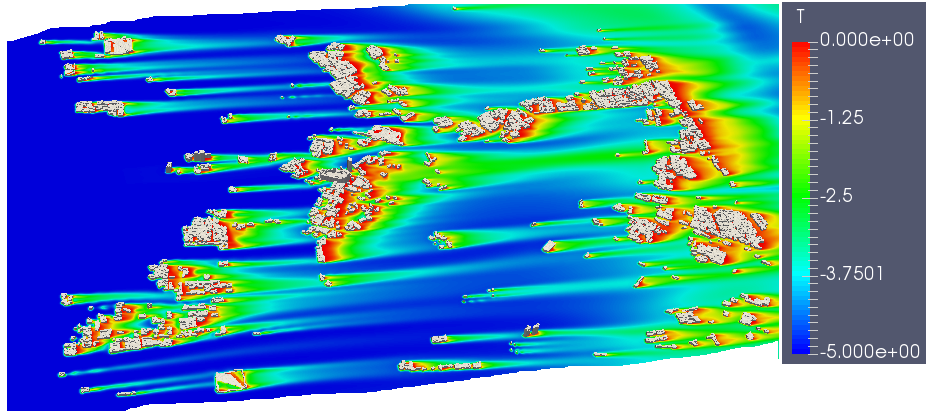- 1. Building Airflow and Thermal Management
- CityFFD - City Fast Fluid Dynamics
- CityBEM - City Building Energy Model and Whole-building energy analysis
- Built Environment Scaling and Similarity with 3D Printing Applications
- Natural Ventilation Potential Map
- Forecasting Built Environment by Numerical Weather Prediction Models
- Smart Air Curtains
- Sub-Scale Model Experiment and Dimensionless Design
- Modular Growing Bed Ventilation System Design With SLA(Stereolithography Apparatus) 3D Printing Technology
- 2. Building Fire Protection and Smoke Management
- People
CityFFD - A New In-house Dimensionless Urban Microclimate Fast Fluid Dynamics + Large Eddy Simulation (LES) Model
Student: Mohammad Mortezazadeh Dorostkar, Ph.D. Candidate
Sponsor: NVIDIA; NSERC Discovery Grants; Concordia University Research Chair
We gratefully acknowledge the support of NVIDIA Corporation with the donation of the Titan V GPU used for this research.
Publications:
A. Katal, M. Mortezazadeh and L. Wang. 2018. Modeling building resilience against extreme weather by integrated CityFFD and CityBEM simulations. Applied Energy. Under Review. Pages 29.
M. Mortezazadeh, Z. Jandaghian and L. Wang. 2018. Integrating CityFFD and WRF for modeling urban microclimate in street canyon. Journal of Building Performance Simulation. Under Review. Pages 23.
M. Mortezazadeh and L. Wang. 2018. SLAC – A semi-Lagrangian artificial compressibility solver for steady-state incompressible flows. International Journal of Numerical Methods for Heat and Fluid Flow.
M. Mortezazadeh and L. Wang. 2016. A high-order backward forward sweep interpolation algorithm for semi-Lagrangian method. International Journal for Numerical Methods in Fluids. Volume 84, Issue 10, 584–597.
M. Mortezazadeh and L. Wang. 2018. Modelling urban airflows by a new parallel high-order semi-Lagrangian 3D fluid flow solver. The 4th Conference on Building Energy Environment (COBEE 2018), Melbourne, Australia, 2018/2.
Research Highlights (A few hours computing time for 10-50 million grids on a PC with one GPU card):
1. Modeling Urban Microclimates
Montreal 2017 Summer Heatwaves and Urban Heat Island
- Montreal Downtown with Mont Royal
Toronto Downtown
CityFFD Modeling Process
Xi'an China, Downtown (5000 buildings, 30 million grids, 3 hours)

Tianjin, China (Tianjin University and Nankai University)

CityFFD modeling process: GIS map (OpenStreetMap -> Grid generation -> Postprocessing)